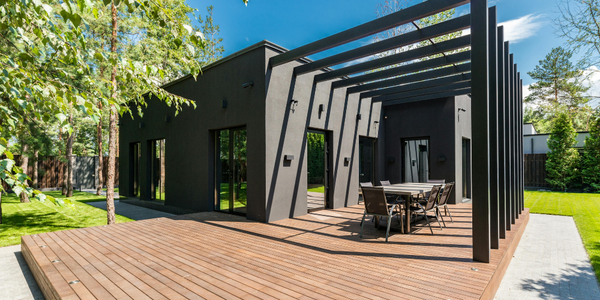So, you’ve finally installed your brand-new fence. Maybe it’s a neat run of pressure-treated fence boards or a full garden fencing setup to define your outdoor space. Naturally, the next step is to make it look great and last longer by painting or staining it. But there’s one important question you need to ask before you pop open that paint tin: How long should you actually wait before painting a new fence?
While it can be tempting to jump straight in with your favourite wood stain or colour, painting too soon could lead to disappointing results, flaking, peeling, poor absorption, and more. In this guide, we’ll walk through exactly why waiting is essential, how long to wait depending on your fencing materials, and how to know when your fence is finally ready for that finishing touch.
Why You Need to Wait Before Painting a New Fence
Painting a fence isn’t just about making it look good; it’s about protecting it from the elements. But if your timber is still full of moisture when you apply a paint or stain, it will struggle to adhere properly. The result? A flaky, uneven finish that doesn’t last and may even trap moisture, accelerating rot and decay beneath the surface.
Most garden fences, particularly those made with pressure-treated wood, are delivered with high moisture content. The pressure treatment process, which helps protect timber from insects, mould, and weathering, involves soaking the boards in preservative solution. While this process dramatically improves durability, it also means the boards need time to dry out before you apply any finishes.
Does the Fence Material Affect the Paint Wait Time?
Yes, the type of wood used in your fence will play a big role in how long you should wait before painting. Pressure-treated timber, one of the most popular options, generally requires more drying time. Typically, you’ll want to wait anywhere between three and six months after installation before applying any paint or stain. During this time, the wood will slowly release the moisture retained during treatment.
If your fence is built from cedar or kiln-dried boards, the drying period is much shorter. These materials come with lower initial moisture content, meaning they can be painted in as little as four to eight weeks, sometimes even sooner, depending on the weather conditions. Still, it's always best to check the wood before painting, regardless of the material.
For untreated or natural softwood fences, you may only need to wait a few weeks, as these boards dry more quickly. However, they are also more vulnerable to the elements, so be prepared to apply a wood treatment early to help protect against early weather damage.

How to Tell When Your Fence is Ready
So, how do you know when your fence is dry enough to paint? A simple visual inspection is a good start. Dry boards will look lighter in colour and feel less damp to the touch. If they’re still dark or greenish (from the pressure treatment), it’s best to wait longer.
A useful trick is the “sprinkle test.” Just flick a few drops of water onto the surface of the wood. If the water beads up, it’s still too damp. If it absorbs quickly, your boards are likely ready. For the most accurate result, you could also use a moisture meter. Ideally, your fence should be at or below 20% moisture content before applying any treatment.
Don’t forget about the weather. Warm, dry days with good airflow help speed up the drying process, while cold or humid conditions will slow it down. Try to time your painting for a stretch of mild, dry weather to ensure the best results.
What Happens If You Wait Too Long to Stain a Fence?
There is such a thing as waiting too long to paint a new fence. If left untreated for several months or longer, timber can start to grey, crack, or develop mildew. Sunlight and moisture work together to break down unprotected wood over time. Fortunately, even weathered wood can be revived.
Before painting an aged fence, you’ll want to clean it thoroughly; this could mean scrubbing it down with a timber cleaner or even power washing. Once it’s clean and dry, a light sanding will help remove any grey or damaged surface wood, allowing paint or stain to soak in properly. From there, you’re free to apply your chosen finis
Choosing the Right Wood Paint and Stains
Once your fence is ready, choosing a quality stain or paint is just as important as your prep. At BTL Timber, we stock a wide selection of stains, sealants, and outdoor wood paints designed for all kinds of fencing projects. Whether you want a transparent stain to highlight the natural grain or a bold colour to transform your garden’s aesthetic, you’ll find the right product in our wood treatments collection.
You’ll also want to make sure you’ve got the right tools and accessories, plus, don’t forget to check out our fence posts and fence boards if you’re still in the planning stages.
Need more advice? Don’t hesitate to get in touch with our expert team, who will be happy to answer any fencing questions.










